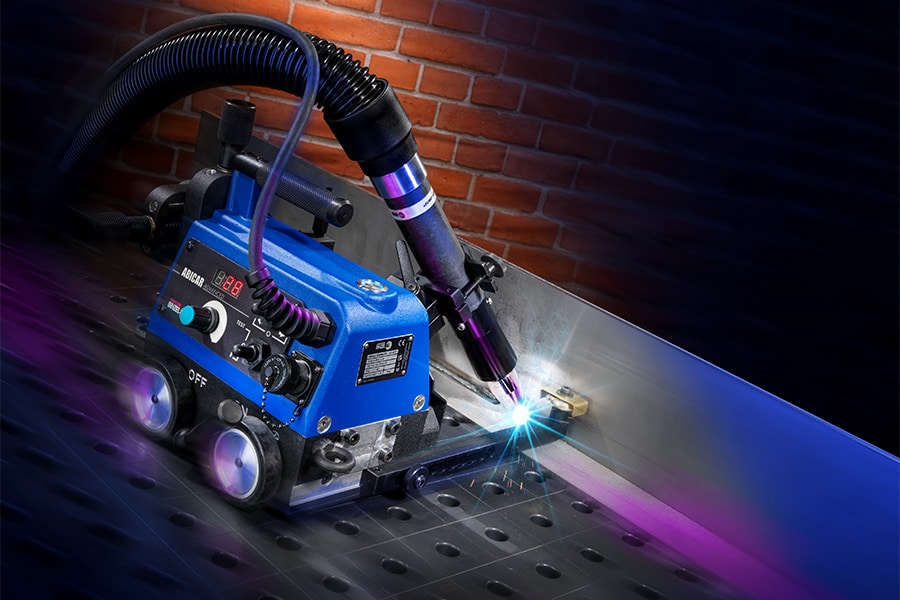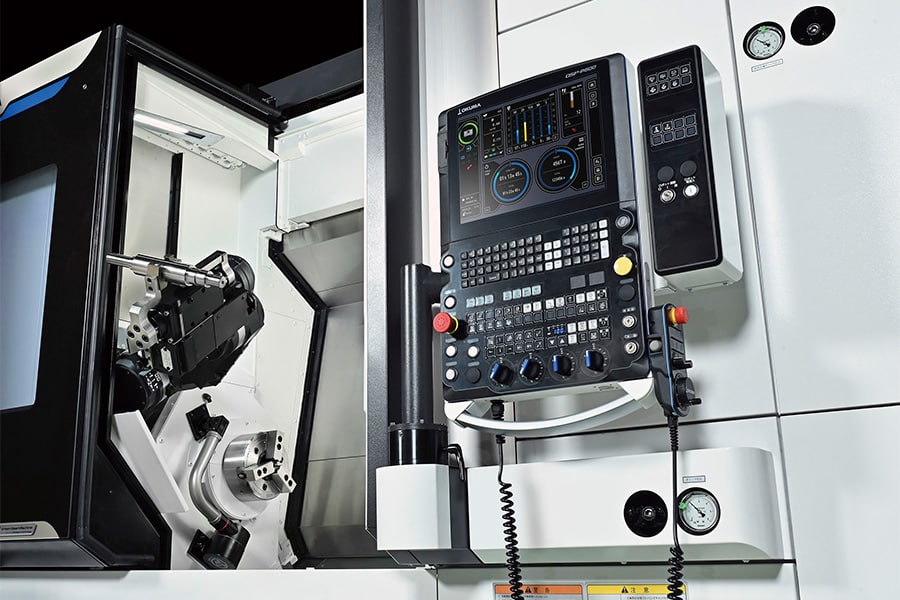
Selective surface machining of nanocomposite with ultrafast laser
A recent study examined ultrafast laser machining of ceramics from zirconia/alumina nanocomposite, the current standard material for ceramic bearing components in orthopedics due to its simultaneously high hardness and wear resistance. Under experimental conditions, the zirconia phase was selectively removed via ablation, while the alumina phase remained intact. This opens new perspectives for selective surface treatments.
The research team, which included experts from Sirris, examined how zirconia/alumina nanocomposite ceramics react under ultrafast laser irradiation at a "fluence" (fluence) near the ablation threshold, where the inhomogeneity of the material is not negligible. Additional attention was paid to the influence of the applied laser fluence on the behavior of the different phases during ablation.

Ultrafast lasers and nanocomposite
With a pulse duration shorter than the electron-photon relaxation time, ultrafast lasers are extensively used for material processing with high precision and minimal thermal influence. In previous experimental studies, the applied laser fluences were much higher than the laser ablation threshold of the materials for efficient material removal. In these, since the grain sizes were much smaller than the laser tip, the influence of the intrinsic microstructural inhomogeneity of the nanocomposite materials was not apparent. However, when the applied laser fluence is around the ablation threshold, there is only a small area in the center of the laser tip, where the local laser fluence is larger than the ablation threshold. Under these conditions, the inhomogeneity of the nanocomposite material is expected to have a significant impact on the results of laser machining and therefore should not be overlooked.
Laser ablation
Instead of considering the substrate as a homogeneous material, as is common in laser micromachining, the recent study examined the ablation behavior of the different material phases around the threshold of laser ablation in ultrafast laser irradiation. In (laser) ablation, material is heated locally, so that when a critical value is exceeded at a certain temperature, the material is thereby vaporized and thus removed. Because the material is physically removed via ablation, the thermal energy contained in the mass is also removed and the average temperature of the remaining material will decrease.

The experiment
The ceramics made of single-phase zirconium and aluminum and zikonium/alumina nanocomposite were achieved with commercially available powders via pressureless sintering. The sintered ceramic was first polished with diamond paste of different grain sizes, then with a SiO2 polishing solution to achieve a smooth surface finish. The roughness over a larger surface area was less than 10 nm for both the zirconia and composite materials. Irregularities on the surface of the alumina surface were caused by extracted grains during polishing, which significantly increased the surface roughness over a large area, while the surface roughness over a small area still remained below 10 nm when the defects were not taken into account. The ceramic was processed using as laser source a femtosecond laser with Gauss beam profile, with 250 fs as full width at half the maximum pulse width and a maximum pulse energy of 20 μJ. The wavelength of the laser was 1,030 nm and the focal length of the optical lens was 100 mm.
Findings
Under experimental conditions, the zirconia phase could be selectively removed via ablation, while the alumina phase remained intact. The laser ablation threshold is a critical parameter for the laser micromachining process. Several phenomena occur around this threshold, such as material removal and the formation of laser-induced periodic surface structures (LIPSS). To investigate the behavior of material around the ablation threshold, a scanning experiment was performed. When the applied laser fluence was 2.02 J/cm² (i.e., a little more than the ablation threshold of zirconia under 16-pulse laser irradiation, but less than that of alumina), small laser-induced defects were detected on the zirconia phase, especially at the grain boundaries between the zirconia and alumina phases. At a laser fluence of 2.24 J/cm², which is much more than the ablation threshold of zirconia under 16-pulse laser irradiation, but still less than that of alumina, much larger laser-induced defects were seen, mainly in the zirconia phase.

Ablation threshold
According to research, the ablation threshold of dielectric materials is linked to the bandgap, with an exponent ranging from 2.5 to 3. The bandgap of zirconia is around 5.8 eV, while that of alumina is around 8.8 eV. Because of this larger bandgap, alumina is expected to be more resistant to laser ablation compared to zirconium oxide. This implies that under certain laser processing parameters, the zirconia phase can be processed and removed via ablation, while the alumina phase remains intact, which could be confirmed during the experiments within the study: due to the nonlinear absorption mechanisms under ultrafast laser irradiation, the zirconia phase, with a bandgap of 5.8 eV, could absorb more laser energy than the alumina phase, with a larger bandgap of 8.8 eV.
The negligible heat diffusion length ensures that the absorbed laser energy remains bounded in the individual phases, leading to selective ablation of zirconia under the given laser influence.
Potential for surface treatment
Based on this observation, a surface treatment method via ultrafast selective laser ablation can be proposed to change the surface composition of nanocomposite materials composed of phases with different bandgaps. Thus, it becomes possible to selectively remove certain phases from the surface of the materials. Unlike other surface treatment methods, such as sandblasting, non-selective chemical etching, laser surface texturing and traditional mechanical machining, where changing the surface topology is the main goal, the new ultrafast laser method aims to selectively change the surface composition of a nanocomposite material composed of different phases. By removing specific phases, the surface topology is inevitably changed, which can add value or induce a reverse effect on the final product, depending on the desired functionality.

Applications
Possible applications can be found where the requirement for surface composition is different from the bulk material to perform certain functions. The advantage of this method is twofold: on the one hand, in analogy to selective chemical etching, this method offers a new physical way to change the surface composition of a composite material, but without adding new chemical elements to the environment. On the other hand, the method is characterized by the removal of individual grains, resulting in small voids on the treated surface. The size of the cavities is determined by the grain size, which can be smaller than the diameter of the laser beam. Therefore, the method can also be used to modify the surface topology of a composite material with a much smaller feature size compared to the classical laser surface texturing process, where the feature size of the texture is usually limited by the laser spot size. This can be useful to improve the wear performance of treated surfaces.
In collaboration with Sirris



